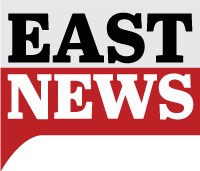In a groundbreaking move, Chief Minister Pema Khandu of Arunachal Pradesh has underlined the importance of extending the Ayushman Bhava program to reach every corner of the state, not just district hospitals. This visionary step aims to ensure that healthcare services are accessible to even the remotest villages in the region.
Chief Minister Khandu joined the launch of the ‘Ayushman Bhava’ campaign, led by Governor Lt. General KT Parnaik (Rtd), via virtual means. This campaign is poised to enhance the coverage of various health schemes with a mission-oriented approach, aligning with the Central government’s commitment to ‘sabka vikas’ or inclusive development.
Recognizing the pivotal role of panchayats in making public programs effective, Chief Minister Khandu advised District Medical Officers (DMOs) to engage them in coordinated efforts. This collaboration is vital for the successful implementation of the campaign, set to run from September 17th to October 2nd. DMOs were further urged to formulate detailed programs for their respective districts, adhering to guidelines provided by the Union Health Ministry.
Highlighting the state’s proactive approach to healthcare, Khandu revealed that, post-COVID, the government embarked on an ambitious mission to upgrade healthcare facilities. This encompassed District Hospitals, Community Health Centers, Primary Health Centers, Sub Centers, and Health and Wellness Centers across the state. The results have been impressive, with notable improvements in maternal and child care, institutional delivery, critical and emergency care, cancer care, and renal care.
Chief Minister Khandu also celebrated the substantial reduction in the healthcare workforce gap, which plummeted from 33% to a mere 6% over the past two and a half years. The state government’s commitment is further demonstrated by the establishment of a Public Health Nursing Cadre, introducing 450 posts in Groups C, B, and A, and 623 posts of Hospital Nursing Cadre. This expansion aims to meet the surging demand for secondary healthcare services.
To align with the Indian Nursing Council Norms, the state government has created 5 posts of Associate Professors (Nursing) and 18 posts of Assistant Professors (Nursing). Additionally, the intake capacity of MBBS students at TRIHMS will increase from 50 to 110 seats in the upcoming academic session. Additionally, to support the lone medical college in the state, 272 ancillary posts, including nursing officers, were approved in the recent Cabinet meeting.
Chief Minister Khandu applauded the successful implementation of two vital healthcare services – PM Jan Arogya Yojna and the CM Arogya Arunachal Yojna. PMJAY achieved full enrollment in 89 villages across 16 districts, while CMAAY has enrolled over 5.7 lakh individuals, with more than 25,000 patients benefiting from tertiary care services.
In a significant shift, the Chief Minister advocated for the decentralization of medicine procurement for government hospitals. Recognizing the diverse disease patterns across districts due to geographic and topographic variations, he recommended district committees handle medicine procurement based on local requirements. This approach aims to ensure medicines are readily available and not at risk of expiration during transportation from the state capital.
Chief Minister Khandu also expressed his gratitude to all Nikshay Mitras who are actively fighting against TB by supporting TB patients. He remains optimistic that more volunteers will step forward to join this noble cause. He also acknowledged and congratulated the ‘best performing districts’ in various categories, honored by the Governor during the event.
This holistic approach to healthcare in Arunachal Pradesh signifies a commitment to the welfare of its citizens, ensuring that quality healthcare services are accessible to all, from the bustling towns to the remotest villages. It’s a significant stride towards a healthier and more prosperous Arunachal Pradesh.

